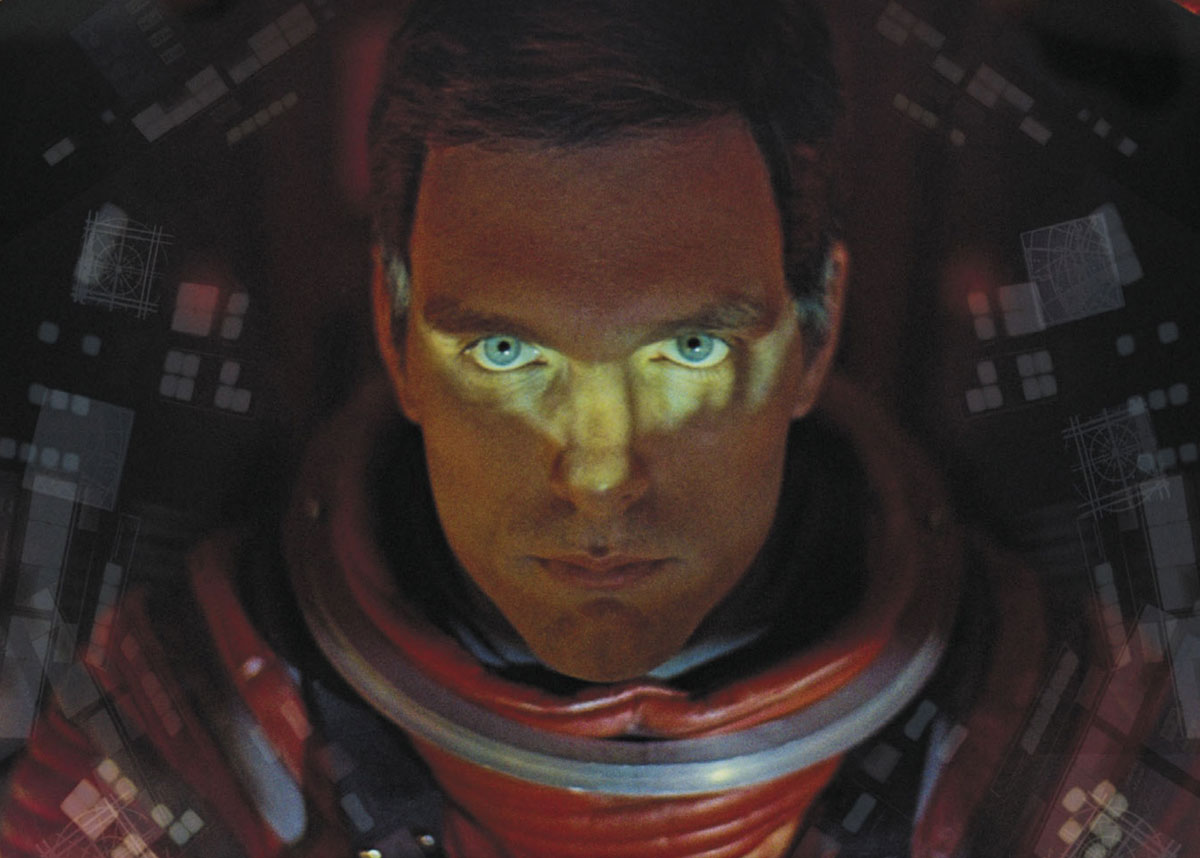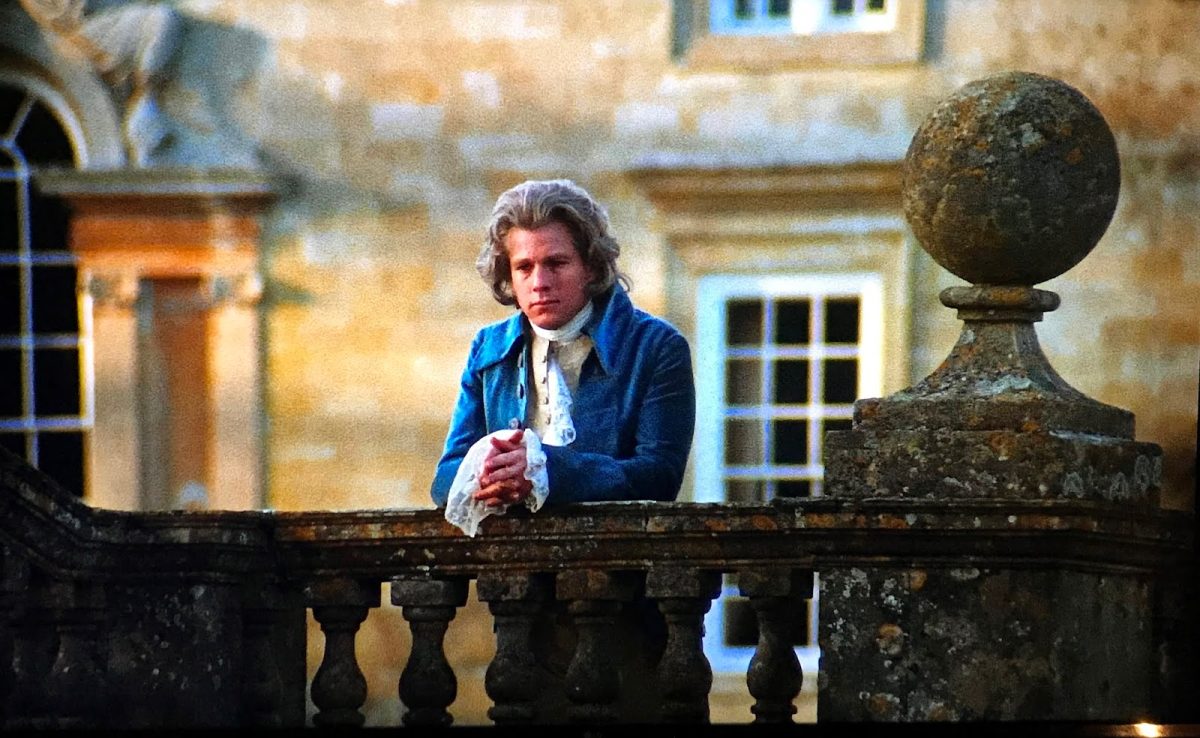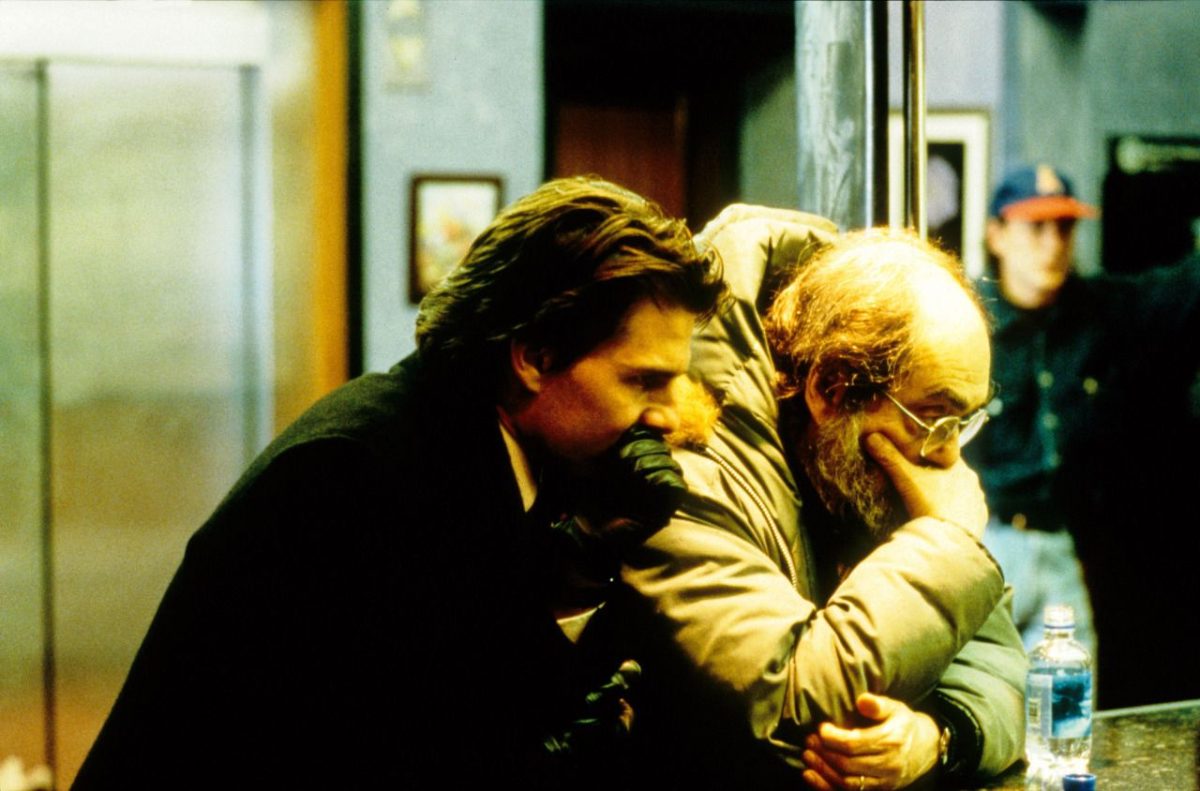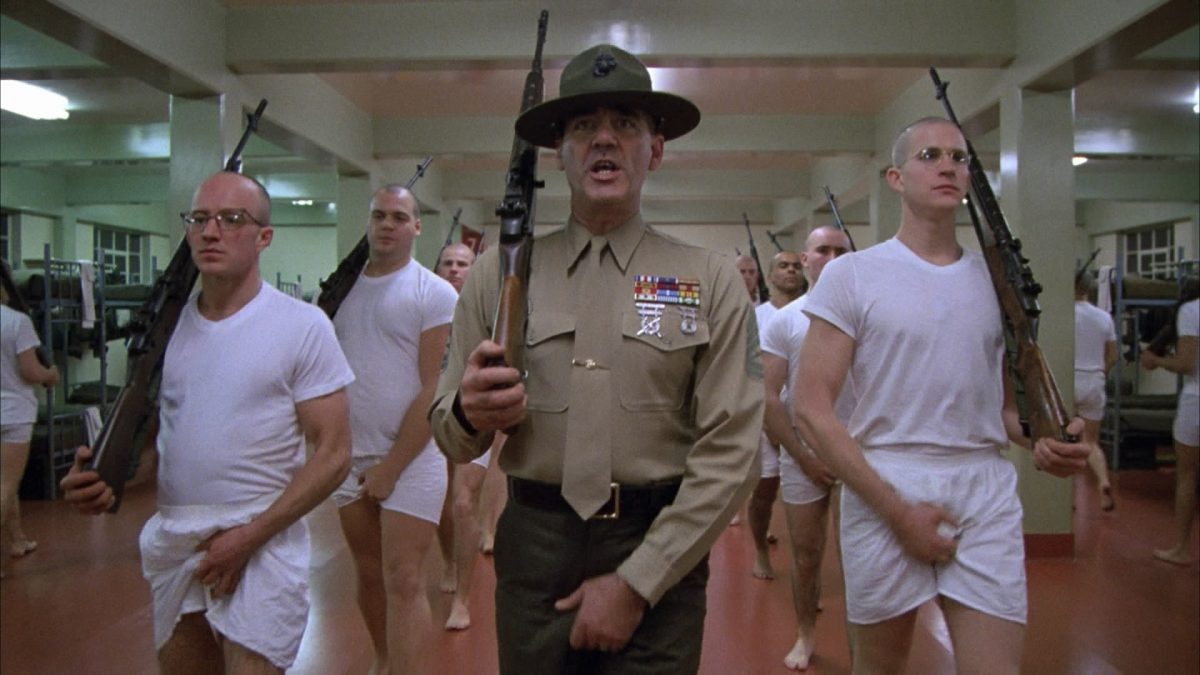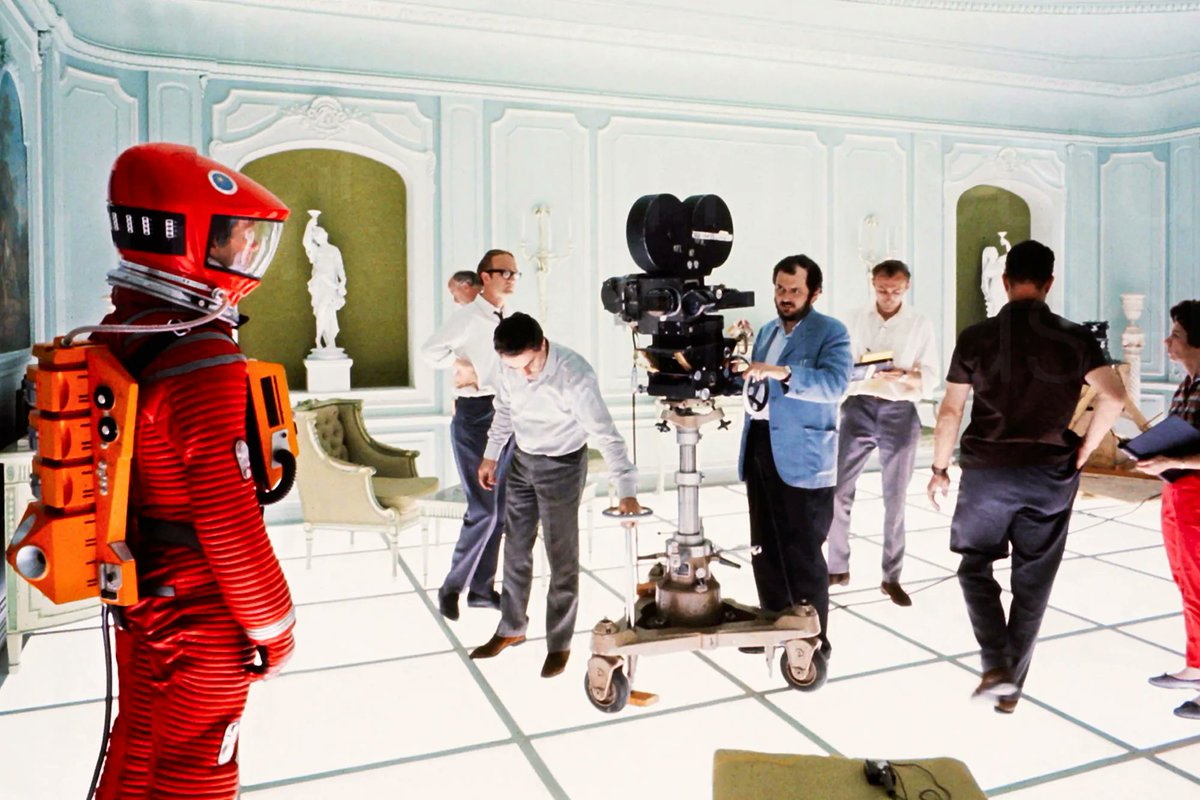Stanley Kubrick was determined the design for his ‘definitive attempt’ at the science-fiction film should represent a decisive break with Hollywood norms — and who better to enlist to his cause than a pair of spacecraft consultants poached from the very heart of NASA itself?
Stanley Kubrick’s first choice of production designer for ‘Journey Beyond the Stars’ (as 2001: A Space Odyssey was then called) was Ken Adam. Kubrick and Adam had developed a very intense working relationship on Dr. Strangelove, which was released at the end of January 1964. The two key sets in the film — the Pentagon War Room with its giant poker table and the detailed two-tier interior of the B-52 bomber — had attracted an unusual amount of critical attention. So, at the end of July 1964, Kubrick wrote to Adam, asking if he would consider designing his next film project. Adam was very busy at the time with The Ipcress File and preparations for Thunderball and besides could not “be expected to accept blindly a very important position on a most difficult project, which I know would require all my resources and ingenuity”. He was concerned that with “all kinds of research at your disposal” and the input of specialists from NASA there “would not be any room left for my imagination”. Kubrick was already envisaging a realistic science-fiction epic to be based on the latest discoveries; a fictional semidocumentary on a colossal scale, preferably to be shown on the widest screen there was. The wild expressionism of Dr Strangelove could scarcely be further from his intentions. So Adam politely declined. Kubrick took this badly.
But before he wrote to Adam, in May 1964, he had also corresponded with the Hollywood matte painter and illustrator Chesley Bonestell, letting him know about ‘Journey Beyond the Stars’: “I am presently working with [author] Arthur Clarke [since April 1964] on an idea for a science-fiction film, which might prove to be the definitive attempt. I am, as you might well imagine, enormously impressed by the imagination and quality of your work. This is just a note to… find out how to get in touch with you when the time comes.”
Kubrick and Clarke had been viewing as many ‘space movies’ as they could lay their hands on in New York, including Destination Moon (1950) and Conquest of Space (1955), both of which Bonestell had designed. Bonestell had also illustrated a very influential eight-part series of articles for Collier’s magazine, beginning in March 1952, on the possibilities of space exploration, with much of the promotional text provided by Dr Wernher von Braun. Collier’shad a huge circulation and it has been claimed of these articles that “no artist had more impact on the emerging popular culture of space than Chesley Bonestell”. According to Clarke, where the diet of space movies was concerned, Kubrick was “highly critical of everything”, always noting the poor quality of the design and special effects and the puerility of the scripts. But Destination Moon did capture his attention. As, it seems, did Bonestell’s celebrated illustration of a large circular revolving space station in Collier’s. Although Bonestell replied, “I would be glad to discuss it [the design of the project] with you at any time,” the correspondence ended in August 1964. Kubrick kept reproductions of Bonestell’s paintings from the book The Conquest of Space among his pre-production notes, and had a 35mm print of Destination Moon shipped over to MGM studios at Borehamwood in September 1965. But, as Arthur C. Clarke noted, the research context had changed beyond all recognition since the mid-1950s, the heyday of space boosterism. Manned space flights had been happening in the real world since 1961. “We were interested in starting where Destination Moon finished,” he wrote.
THE ART OF SCIENCE
On 7 September 1964, shortly after Kubrick wrote to Adam and Bonestell, he produced a “100-item questionnaire about our astronauts, eg do they sleep in their pajamas, what do they eat for breakfast, etc.” ‘Journey Beyond the Stars’ would represent a decisive break with the usual Hollywood ways of doing these things. It would present technological and scientific change within conceivable limits — designing a plausible future for filmgoers who could well live to see it — and would have to work punishingly hard to do so. Unlike earlier mainstream science-fiction films, it would not attempt to break the continuity of history: on the contrary, it would deliberately mix the familiar (brands and products — to Western eyes anyway) with the speculative. It would be obsessively detailed — not with scientific verisimilitude as an end in itself, but as an aesthetic strategy. It would create a visual world out of material things that had never been seen in public quite like this before (except, occasionally, at world’s fairs). Instead of Bonestell’s moonscape of jagged mountains and parched mudflat surfaces, it would feature rounded mountains and rubble – which is what they really looked like, according to the latest photographs supplied by the Department of Astronomy at the University of Manchester and by the Soviet science attache at the London embassy; these were the clearest available images before the moon landing in 1969.
Enter Frederick I. Ordway III and Harry (Hans-Kurt) Lange, who happened to be in New York in January 1965 for talks with publishers about their latest book project and for a conference on astronautics. They both worked for the NASA George C. Marshall Space Flight Center in Huntsville, Alabama — Ordway on the communications and networking side, liaising between the predominantly German rocket scientists, business and government; Lange as an illustrator of advanced spacecraft concepts for future projects graphics. Dr von Braun, their boss, used Lange’s clever visualisations to help elicit funding from Washington: “Harry,” he once said, “your work makes money where everybody else spends it.” As Lange himself put it, “I made them to be as dramatic as possible — to take to appropriation committees.” Ordway and Lange had also set up in the mid-1950s, with some colleagues, the grand-sounding General Aeronautics Research Corporation, intended to produce publications and consultancy: Ordway the words, Lange the pictures.
On 22 January 1965, they contacted Ordway’s friend Arthur C. Clarke in New York, met him at the Harvard Club, and mentioned that they were working together on a book project Intelligence in the Universe. Ordway recalls: “That’s when he mentioned that he was working with director Stanley Kubrick on a film which aimed to be the science-fiction film, one which would be serious, scientifically plausible and big budget. It would involve other intelligences in space…”
Clarke contacted Kubrick and the four men met in the director’s penthouse on East 84th Street the following afternoon. “We took along the galleys and the pictures and I told him that I’d been working with von Braun at NASA and that this was a little sideline here,” says Ordway.
After a “mentally exhilarating” conversation that ranged across rocket science, ballistic missiles, computers and aliens, according to Lange, Kubrick studied his pictures closely, looked him in the eye and announced: “Well, I can get better illustrators in New York City a dime a dozen, but they don’t have your NASA background, your combination. That’s what I need.”
Lange did not take offence. He flew back with Ordway to Huntsville five days later, with a confidential copy of Clarke’s long treatment of ‘Journey Beyond the Stars’ in his luggage. An airmail, by special delivery, soon arrived confirming that Kubrick wanted to make a deal with General Aeronautics for the services of both men. By February it was clear that this would involve at least 80 per cent of their time, and with von Braun’s blessing they signed a six-month contract with Polaris Films of 239 Central Park West. Ordway would provide scientific advice and would liaise with his network of corporate and government contacts in space and computer research (the Kubrick Archive contains 300 files on product development alone): a number of big corporations had exhibited at the New York World’s Fair, which opened on the same day as Clarke first met Kubrick, 22 April 1964, and the film made use of several of them. Lange would design the space vehicles, environments and space suits. A typically robust request for technical help with some of the film’s designs, written by publicity director/vice-president of Polaris Roger Caras a few months after Ordway and Lange had been signed up, tried hard to distance the project from the usual clichés of ‘science fiction’: “The film will operate without the assistance of Mickey Mouse, Buck Rogers, Russian spies, Jack Armstrong the All-American Boy [a radio and movie serial adventure hero], moths, butterflies and bumblebees destroying cities and raping Japanese women. In short [the film] will be a logical extension of today’s rapidly developing techniques and technologies.”
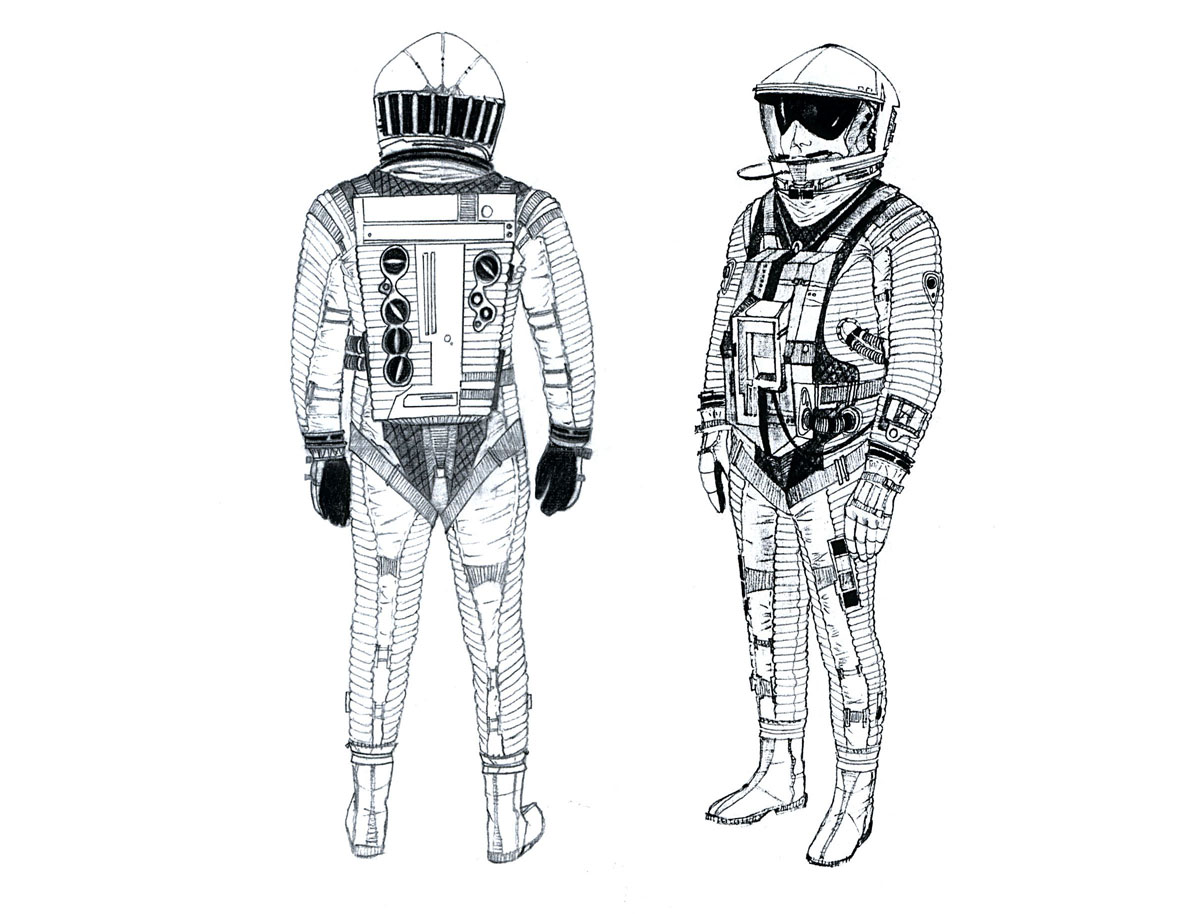
Lange started serious work on the design of the six main vehicles featured in the treatment in February 1965. They were the Orion III earth-to-orbit shuttle; Space Station One (later V) in orbit around the earth; the Aries 1B earth-orbit-to-lunar surface spacecraft; the lunar surface bus used to move people and materials; the large Discovery One interplanetary spaceship and its small round (originally rectangular) Space Pods “with extendable arms” for maintenance and local exploration. Work was also underway on a friendly, female-voiced computer called Athena (later the more malign HAL) and spacewear for scientists on the moon and astronauts aboard Discovery. By April, according to Clarke’s log, “the walls [of the Polaris office] are getting covered with impressive pictures…”
Lange recalled that these had to be both detailed and rigorously defensible: “A lot of other people would have thought, ‘Well, we’ll just have a little black panel there and paint it black, and then stick some blue squares on it, that’s it, you make one or two of them light up.’ But that’s for television, and they can get away with it because it’s a little bitty screen; but this was Cinerama, the wraparound, and you don’t get away with it. It had to be absolutely perfect and Stanley was a great stickler for detail.”
This was an understatement. Large would produce “small thumbnail sketches”, which he would discuss with Kubrick, then more sketches, then semi-developed drawings — still with plenty of options — and finally, or almost finally, detailed technical specifications and in some cases paintings. Kubrick would often ask him to work on visual ideas even though he was pretty sure he did not like them — because only by actually seeing Lange’s drawings could he make up his mind.
What did Kubrick feel about working with such close associates of von Braun, one of whom was German? After all, Dr. Strangelove, as played so memorably by Peter Sellers, had in many ways been a wheelchair-bound caricature of von Braun. Peter George’s novelisation of the screenplay — then recently published — was in no doubt about this. Sellers was to state categorically, “It was always Wernher von Braun”, and Ken Adam confirms it. He should know: the two men went to the same school in Berlin in the 1920s. Ordway recalls: “Of course, Kubrick was Jewish and Harry would come in with Germanic clothes sometimes. There was a time when he even wore Bavarian jackets! But they got along fine. Stanley would sometimes say to me, ‘Well I don’t think I ever imagined I’d be working this close to a German’.”
For obvious reasons, there would be no more gags about von Braun and involuntary Nazi salutes — even if Lange did sometimes come to work looking like Baron von Trapp.
Tony Masters arrived in New York in April 1965^0 head up the art department, in the same month as the change of title to 2001: A Space Odyssey. Kubrick had asked Ken Adam at the beginning of February to recommend a list of British production designers who had a proven track- record in organising complex productions, running a large budget and understanding the technologies of film- making: “If the stress must be on the creative or the other elements [technical and cost] I think I would prefer the technical side… Keep in mind the personality of the old maestro and how it might mesh with your choices.” Masters had worked on The Day the Earth Caught Fire and (uncredited) for David Lean on Lawrence of Arabia. From April onwards, all Lange’s designs would be submitted through him, and under his management put into highly coloured pictorial formats — sci-fi cover-art style — by the illustrators Richard McKenna and Roy Camon. As Ordway remembers, “Harry had the ultimate design of all the space elements — because he had the experience of working in that area.” Masters acknowledged that “Harry put the authenticity into it”, and that when they were all working together as a team, they began to design within his visual idiom.
One problem was that Lange had never designed for a film before. “I was not a professional,” he later admitted, “I was a spacecraft designer, visualisation expert, whatever you want to call it. I certainly knew nothing [at the outset] about how to… make it into a film set.”
The presence of Masters in New York, two months in, helped him through this brave new world of film, as did Kubrick’s persistence as “a good taskmaster”. Eventually, over at Borehamwood, the director managed to persuade the union — not easy to do — to allow Lange the credit ‘production designer’, on the grounds that by then he had served his time for two years. Ordway remained happy to be billed as ‘scientific consultant’.
Lange certainly brought authenticity to the project. Ordway confirms that some of his drawings may well have been submitted for security clearance to NASA, based as they were on classified information — and this was, after all, still at the height of the Cold War. He brought a ‘look’ as well: clinical, ice-cool, eggshell white rather than the shiny steel of traditional sci-fi rockets. He tended to deny, in interviews, that this was a matter of styling. Design in space films, he always said, was about purpose and function, and “only out of that comes a style of its own”. Beauty was a by-product. But he did concede that part of the job was to make the vehicles, interiors and spacesuits look functional and ‘technical’, involving choices about what would work best on the screen. The results have since been called ‘Project Modernism’. Kubrick put it differently: “I think there were two problems with the design of anything [in 2001]. One was, ‘Is there anything about it that would be logically inconsistent with what people felt would actually exist?’ and the other one was, ‘Would it be interesting? Would it look nice?”’
By the time of the move to MGM Borehamwood — Lange in July 1965, Ordway in August — much of the design work on the vehicles had been completed, ready for the model-making shops and set builders. The six-month contract was turning into two years plus. There were still some important design decisions to be made, especially about the second half of the film. Would Discovery be powered by nuclear propulsion? Would her destination be Jupiter or Saturn? How much emphasis would there be on the ‘hibernaculum’ in space? Would there be a sequence set at the World Space Center in New York, involving establishing shots of the street? Would Bowman descend into a Stargate on Jupiter V and find himself in an extraterrestrial civilisation? Some of these were being actively debated only weeks before the start of filming on 29 December 1965. But the bulk of the vehicle and spacesuit designs were created between February and July 1965. They had to be…
When it was all over, early in 1967, Ordway returned to his full-time job at NASA, while Lange decided to stay in England and continue as a designer for film, specialising in space hardware (The Empire Strikes Back, The Return of the Jedi, Moonraker). Robert O’Brien, the amazingly patient head of MGM, summarised the 2001 saga in a famous Variety interview: “Why have Buck Rogers for six million dollars, when you can have Stanley Kubrick for seven million dollars?” In point of fact, the film cost $ 10.5 million, of which an estimated $6.5 million was spent on “artefacts and sets and camerawork and special effects photography”. Von Braun was reported to be pleased with the result.
Source: Sight&Sound, December 2014

